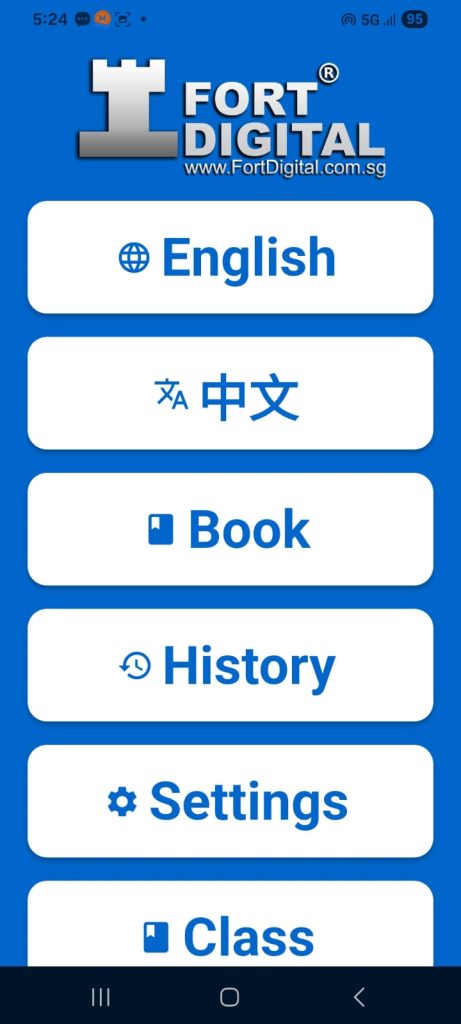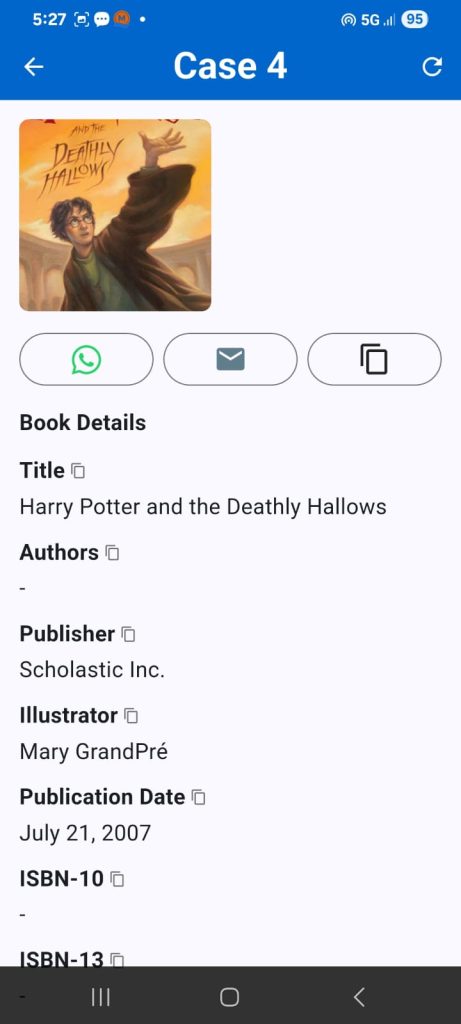Let AI Save 90% of Teachers Time
This is the first system in the world to evaluate the composition against 7 International English proficiency standards and 6 International Chinese proficiency standards.
This AI-powered scoring system eliminates the need for time-consuming manual marking by automatically evaluating compositions with internationally recognized standards. By providing instant, consistent, and unbiased scores, teachers can save up to 90% of their grading time, allowing them to focus more on guiding student learning and giving meaningful feedback.

Just Snap the Pictures and Done

Using this system is extremely simple. Just download the app from the Apple App Store or Google Play Store, open it, and use your phone to take a picture of the student’s composition paper. Within a few seconds, the system automatically analyzes the writing and generates all the results across the international scoring standards. There is no setup, no manual marking, and no training required. Everything is instant, accurate, and ready to use right away.
English Scoring
For English compositions, using advanced AI language analysis, we evaluate the composition against 7 International English proficiency standards and provide a score. The process is fully automated with no human involvement, ensuring consistent and unbiased scoring, without the variations or limitations that come with human interpretation or judgment. They are : CEFR Score, Lexile Score, WIDA Score, TOEFL Score, UK National Curriculum Levels Score, DIBELS Score, and Flesch-Kincaid Score. This makes it the most comprehensive scoring system available in the market.
1. CEFR Score
A CEFR score refers to the Common European Framework of Reference for Languages, a standardized system used worldwide to describe a person’s language proficiency across reading, writing, listening, and speaking. The scale is divided into six levels: A1 and A2 for beginners, B1 and B2 for intermediate learners, and C1 and C2 for advanced users approaching native-like fluency. Each level outlines what learners can understand and communicate in real-life situations. CEFR scores are widely used in schools, language programs, exams, and professional settings to determine placement, track progress, and set learning goals.
2. Lexile Score
A Lexile score is a numerical measure of a student’s reading ability or a text’s difficulty, developed by MetaMetrics. The score is used to match readers with texts at an appropriate challenge level, with higher scores indicating a higher reading ability and more complex text. This is based on factors like word frequency and sentence structure, and can be used by educators to help students find books that are neither too easy nor too difficult.
3. WIDA Score
The WIDA Score refers to a student’s performance level on the WIDA English language proficiency assessments, which are used in many schools to evaluate how well multilingual or English learner students can understand and use English. The score summarizes abilities across key language domains such as listening, speaking, reading, and writing. WIDA scores are reported on a scale from 1 to 6, where Level 1 indicates a beginner with limited English skills and Level 6 indicates near-native proficiency. These scores help teachers determine the type and amount of language support a student may need in the classroom.
4. TOEFL Score
A TOEFL score is the result of the Test of English as a Foreign Language, which measures how well non-native speakers can use and understand English in academic settings. The test evaluates four key language skills: reading, listening, speaking, and writing. Each section is scored out of 30 points, giving a total score range of 0 to 120. Higher scores indicate stronger English proficiency and are often required for admission to universities, visa applications, or professional certification. Different institutions set their own minimum score requirements depending on the level of English ability they expect.
5. UK National Curriculum Levels Score
The UK National Curriculum Levels were a system used in England to assess students’ progress in subjects such as English, Maths, and Science, typically from ages 5 to 14. The levels ranged from Level 1 for early primary learners up to Level 8 for high-achieving students in early secondary school, with an additional level called “Exceptional Performance” above Level 8. Each level described what students were expected to understand and be able to do at that stage of learning. Teachers used these levels to track progress, set targets, and plan instruction. Although the system has since been replaced by school-specific assessment frameworks, the levels are still sometimes referenced to describe past performance or compare older academic records.
6. DIBELS Score
A DIBELS score comes from the Dynamic Indicators of Basic Early Literacy Skills, a set of short assessments used primarily in early elementary grades to measure how well students are developing key reading skills such as phonemic awareness, letter naming, decoding, fluency, and comprehension. The scores are used to place students into performance categories, often labeled as At/Above Benchmark, Below Benchmark, or Well Below Benchmark, which indicate whether a student is on track with expected reading development or may need additional instructional support. DIBELS is designed to be quick to administer and is often used multiple times per year to monitor progress and guide reading intervention decisions.

7. Flesch-Kincaid Score
A Flesch-Kincaid score is a readability measurement that indicates how easy or difficult a text is to understand, based on sentence length and word complexity. The score is often shown as a grade level, meaning the number suggests the approximate U.S. school grade needed to comprehend the text. For example, a score of 6.0 suggests it is readable by a typical sixth-grade student, while a higher score indicates more complex language requiring advanced reading skills. The Flesch-Kincaid system is commonly used in education, publishing, and professional writing to match text to appropriate audiences and ensure clarity.

Chinese Scoring
For Chinese compositions, we evaluate the composition against 6 International Chinese proficiency standards and provide a score. Same like English Scoring, the process is fully automated with no human involvement, ensuring consistent and unbiased scoring, without the variations or limitations that come with human interpretation or judgment. They are : HSK (汉语水平考试 – Chinese Proficiency Test), Lexile for Chinese (MetaMetrics 中文分级), WIDA for Chinese (World-Class Instructional Design and Assessment), YCT (Youth Chinese Test) for Children, Flesch-Kincaid Readability Score (Modified for Chinese), UK National Curriculum for Chinese Writing
1. HSK (汉语水平考试 – Chinese Proficiency Test)
HSK (汉语水平考试) is the standard international test used to measure Chinese language proficiency for non-native speakers. It is divided into six levels, from HSK 1 (beginner) to HSK 6 (advanced), assessing listening and reading at lower levels and adding writing at higher levels. Lower levels focus on daily vocabulary and simple sentence patterns, while higher levels require understanding complex grammar, abstract topics, and fluent expression. HSK is commonly used for university admissions in China, scholarship applications, job requirements, and personal proficiency goals.
2. Lexile for Chinese (MetaMetrics 中文分级)
Lexile for Chinese (MetaMetrics 中文分级) is a system that measures the reading difficulty of Chinese texts and matches them to a reader’s reading ability. Instead of levels like HSK, it assigns a numeric value indicating text complexity. Higher Lexile values represent more advanced vocabulary, grammar structures, and sentence patterns. Schools and publishers use Lexile scores to categorize reading materials so students can gradually improve fluency by reading texts that are neither too easy nor too difficult. This helps guide personalized reading development and track progress over time.
3. WIDA for Chinese (World-Class Instructional Design and Assessment)
WIDA for Chinese (World-Class Instructional Design and Assessment) adapts the WIDA framework to measure how well learners use Chinese in academic contexts across listening, speaking, reading, and writing. Similar to the English WIDA scale, proficiency is typically described across developmental levels, from beginning to advanced, emphasizing functional communication and language use in real situations. The system helps teachers identify strengths and instructional needs, plan lessons, and support students learning Chinese as an additional language in bilingual or international school programs.
4. YCT (Youth Chinese Test) for Children
YCT (Youth Chinese Test) is a standardized test designed specifically for children aged roughly 6 to 16 who are learning Chinese as a second language. It has four levels of written tests and two levels of speaking tests, focusing on everyday vocabulary and simple communication tasks. The test is easier than HSK and is intended to measure basic communication ability rather than academic or advanced language use. Schools and parents use YCT results to monitor learning progress and motivate young learners with achievable milestones.
5. Flesch-Kincaid Readability Score (Modified for Chinese)
The Flesch-Kincaid Readability Score (Modified for Chinese) estimates how easy or difficult a Chinese text is to read by analyzing sentence length and the complexity of characters or word structures, rather than English syllables. Because Chinese does not separate words with spaces and uses characters instead of alphabet-based spelling, adaptations focus on metrics like the frequency of characters, number of strokes, and grammar structure. The resulting score helps educators choose appropriate reading materials and supports progressive literacy development similar to graded reading systems.
6. UK National Curriculum for Chinese Writing
The UK National Curriculum for Chinese Writing, where implemented in schools, uses staged expectations to describe how learners develop Chinese writing skills over time. Early stages emphasize copying characters accurately and forming simple sentences, while later stages focus on grammar accuracy, expanded vocabulary, paragraph organization, and expression of ideas. Teachers assess progress based on clarity, character accuracy, sentence fluency, and ability to write for different purposes. Although the broader National Curriculum Levels system has been replaced, the staged developmental approach continues to guide teaching and assessment in Chinese language programs in the UK.
Extract Handwriting into Text

Besides scoring, the system also automatically converts the handwritten composition into clean digital text. This means you can easily copy and paste the content, export it, or share it directly through WhatsApp or Email. It removes the difficulty of reading unclear handwriting and allows teachers and parents to review, comment, and store compositions with ease. This makes the entire process not only faster, but also far more convenient and accurate.

Summarize Into 50 Words

The system will also automatically summarize the entire composition into a concise 50-word summary. This helps teachers, parents, and students quickly understand the main idea, storyline, or argument of the writing without having to read through the full text each time. It is especially useful during review sessions, progress comparisons, and classroom discussions.
Detect Grammatical Error
The system also detects and highlights grammatical errors in the composition. It identifies issues such as incorrect tense usage, missing punctuation, awkward sentence structure, and vocabulary misuse. Each error is clearly marked with suggestions for improvement, making it easy for students to understand where they went wrong and learn how to correct it. This transforms marking into a guided learning experience rather than just a score.
Better Suggestions
The system also provides clear suggestions on how the composition can be improved. It may recommend adding more descriptive vocabulary, improving sentence flow, strengthening the introduction or conclusion, or organizing ideas more logically. These suggestions are practical and easy to apply, helping students understand exactly what steps they can take to elevate their writing to a higher standard.
Identify Student Info
The system also automatically recognizes and extracts key student information written on the paper, such as name, date, class, subject, and school. This data is then saved into the database, allowing teachers to easily track each student’s progress over time without manual data entry. It ensures every composition is properly organized and stored for future reference, reporting, and academic monitoring.
Count Writing Quantity

The system also performs automatic text counting for each composition. It calculates the total number of words, total paragraphs, total characters, and total pages instantly after the scan. This gives teachers a clear quantitative overview of the student’s writing output without needing to count manually. It is especially useful for assignments with minimum length requirements and for tracking growth in writing fluency over time.
Bonus : Identify Books Info

In addition, the system includes a bonus feature that can identify book covers simply by taking a photo of the book. Once detected, it automatically retrieves detailed information such as the book title, author, publisher, publication date, ISBN, page count, reading age, Lexile level, summary, and description. It even provides purchase links and price comparisons across major retailers in SGD, USD, and GBP. This allows teachers, students, and parents to quickly reference recommended reading materials, verify book details, or expand a student’s reading list without needing to manually search online.
Customize System
There’s no one-size-fits-all system. Ours is fully customizable to your requirements and existing databases. We can integrate with your current staff database, and add any other customizations you need.
Terms and Conditions of Use
By using the Fort Digital AI System, you acknowledge and agree that all information, data, and results generated by the system are based on artificial intelligence and online data sources, and therefore may not be accurate or complete. All outputs, including pricing, valuation, identification, and personal or product information, are estimates only and should not be considered official or verified. The AI may make mistakes, misidentify items, faces, or documents, and the values shown are derived from multiple online references that may contain discrepancies. Fort Digital Pte. Ltd. and its affiliates shall not be held responsible or liable for any loss, damage, or consequences arising from the use, misuse, or reliance on any information produced by the system. Users are solely responsible for verifying all results and using the information at their own discretion. All prices, descriptions, and other data are provided on an “as is” basis and are subject to change without notice.
ai composition scoring, english essay scoring app, chinese composition scoring app, automated essay grading, ai essay grader, ai writing evaluation, ai composition analysis, english writing score app, chinese writing score app, cefr scoring app, lexile score analyzer, wida score checker, toefl writing score tool, uk curriculum writing assessment, dibels reading assessment ai, flesch kincaid readability analyzer, chinese hsk writing evaluation, chinese lexile reading level tool, yct writing score app, wida chinese proficiency scoring, chinese writing level checker, handwriting to text converter, scan composition to text, ai grading system for schools, teacher workload reduction app, classroom essay scoring software, ai teacher assistant app, smart education tools, school essay marking automation, writing skill improvement ai, grammar error detection app, student writing feedback system, ai learning evaluation, ai literacy assessment tool, english reading and writing proficiency test, chinese reading and writing proficiency test, essay summarizer ai, composition summary generator, school digital marking system, mobile essay scanner, smartphone composition grading, instant essay scoring app, student writing analytics, bilingual writing assessment, ai education tools, singapore school ai grading, malaysia school ai grading, classroom automation tools, reduce marking time app, ai for teachers, smart classroom assistant, literacy improvement platform, writing level benchmark tool, academic writing evaluation app, ai handwriting recognition for essays, automatic text extraction from handwriting, reading fluency assessment ai, chinese school writing assessment system, english school writing assessment system, composition scoring software, bilingual scoring engine, ai language proficiency scoring, multimodal education ai system, essay paragraph count tool, essay word count tool, essay character count tool, essay page count calculator, instant composition feedback, ai writing suggestions system, improve composition writing app, student portfolio writing tracker, teacher digital record system, school data automation tool, edtech composition assessment, ai-based language proficiency evaluation, hybrid learning assessment system, ai classroom workflow automation, academic performance analytics, child writing progress monitoring, ai powered education platform, student writing improvement app, handwriting analysis education software, language mastery scoring app, chinese literacy scoring tool, english literacy scoring tool, ai language mentor, school essay evaluation automation, digital marking assistant, cloud-based scoring system, teacher time-saving app, ai composition rating engine, advanced language scoring, smart school assessment system, reading age detector, lexile measure calculator, bilingual education support software, student learning dashboard, teacher grading assistant, ai marking efficiency tool, essay grading mobile app, children handwriting recognition, automated marking and scoring app, classroom productivity software




